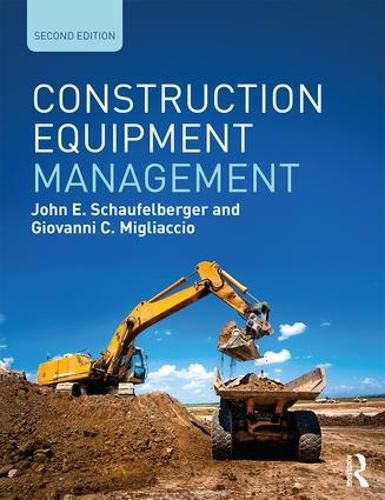Readings Newsletter
Become a Readings Member to make your shopping experience even easier.
Sign in or sign up for free!
You’re not far away from qualifying for FREE standard shipping within Australia
You’ve qualified for FREE standard shipping within Australia
The cart is loading…






This revised and updated edition of Construction Equipment Management fills a gap on this subject by integrating both conceptual and hands-on quantitative knowledge on construction equipment into a process that facilitates student learning.
The first six chapters summarize interdisciplinary concepts that are necessary to ground students’ learning on construction equipment management, including both engineering and economics. Each of the next 16 chapters covers a different type of construction equipment and associated methods of use. The final chapter introduces the more advanced concept of operation analysis. This allows the book to be used on numerous courses at different levels to prepare graduates to apply skills on construction equipment when planning for a new project, estimating its costs, and monitoring field operations.
Organized around the major categories of construction equipment, including both commercial and heavy civil examples, case studies, and exercises, this textbook will help students develop independence in applying concepts to hands-on scenarios. A companion website provides an instructor manual, solutions, additional examples, lecture slides, figures, and diagrams.
$9.00 standard shipping within Australia
FREE standard shipping within Australia for orders over $100.00
Express & International shipping calculated at checkout
This revised and updated edition of Construction Equipment Management fills a gap on this subject by integrating both conceptual and hands-on quantitative knowledge on construction equipment into a process that facilitates student learning.
The first six chapters summarize interdisciplinary concepts that are necessary to ground students’ learning on construction equipment management, including both engineering and economics. Each of the next 16 chapters covers a different type of construction equipment and associated methods of use. The final chapter introduces the more advanced concept of operation analysis. This allows the book to be used on numerous courses at different levels to prepare graduates to apply skills on construction equipment when planning for a new project, estimating its costs, and monitoring field operations.
Organized around the major categories of construction equipment, including both commercial and heavy civil examples, case studies, and exercises, this textbook will help students develop independence in applying concepts to hands-on scenarios. A companion website provides an instructor manual, solutions, additional examples, lecture slides, figures, and diagrams.